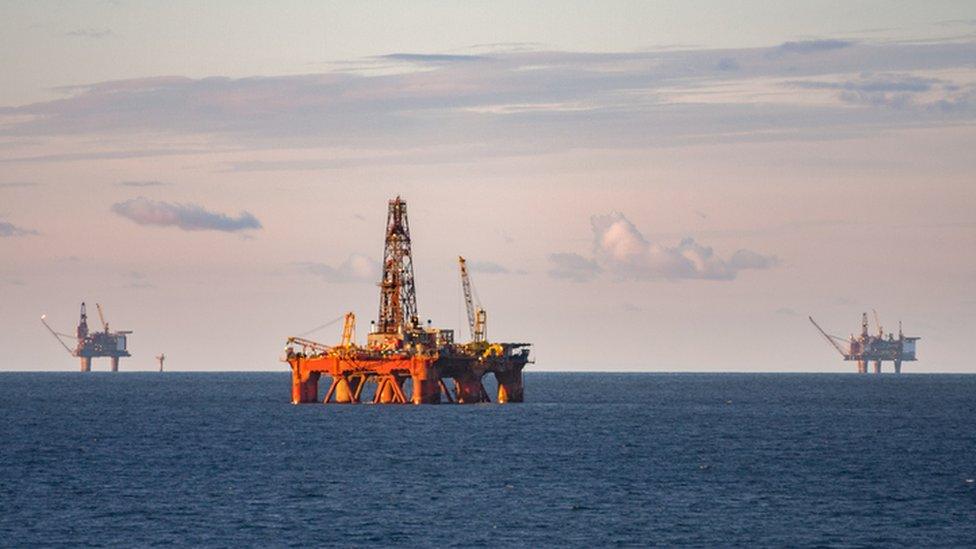Sluggish Scotland
- Published

It's been a rough 10 years for the Scottish economy, as it has with others across Europe and beyond. Looking back to spring 2007, there has been growth of only 7%. That averages only 0.7% per year.
When you factor in the growing population, which helps drive growth, you find Gross Domestic Product (GDP, the measure of economic output) is just 2% higher per head than it was 10 years ago. That's just the average. Many households are significantly worse off.
With wage inflation now at the same level as price inflation, 2.3%, we are (again, on average) expected to get worse off again, in terms of reduced spending power. That's if we're not already doing so.
This sluggish decade is highlighted in the latest look back and look ahead by the Fraser of Allander Institute at Strathclyde University.
It's not a good reflection for the 10th anniversary of SNP in government, which it reaches in about six weeks - not when The Purpose around which the first administration was based, with a capital 'P', was to boost the growth rate.

The report suggests the offshore energy downturn cannot be the only explanation for slower growth in Scotland
Of course, we've seen exceptional circumstances. First the financial crash, then the oil and gas crash, ultra-low interest rates and money printing galore. You might argue that Westminster's squeeze on public spending only worsened things. The past 18 months has seen particularly poor growth for Scotland, while the UK has seen faster growth.
But as the Allander economists have noted before, the exposure in Scotland to the offshore energy downturn cannot be the only explanation for slower growth.
They point to activity in other sectors falling too - food and drink down nearly 2% over the past year.
Computer and electrical products were down 5% last year, and textiles and clothing was down 10%.
Debt mountain
The report highlights some worrying trends far from constitutional debates. Consumer confidence, with low interest rates, has kept the post-Brexit referendum economy motoring nicely.
But growth in the past six months has been accompanied by a reduction in savings rates and an increase in borrowing. That may be partly because the car industry has shifted to a much bigger dependence on consumer loan financing. But Britain has a mountain of consumer debt as well as the government variety, and there are clearly risks from continuing to depend on stacking up more of it.
And relatively muted house price inflation is likely to mute consumer confidence. Prices are up 2% on 2014, while in the UK, they're up 15%.

House prices in Scotland are up by 2% on 2014, while in the UK, they have risen by 15%.
That's a sign of a healthier housing market in Scotland, with the earnings-to-home-price ratio being a lot more sensible. But it is also tied to consumer confidence, and that looks likely to continue its contribution to the relatively sluggish growth.
The Scottish government's new tracker of consumer confidence in household finances found it slipping from the start of last year. But much steeper was the decline in people's expectations of the economy as a whole - falling from the middle of 2015, and plummeting into negative territory around the time of the Brexit referendum.
"Whatever happens, the outlook for consumer spending is substantially weaker this year than last," says the Strathclyde report.
Efficient work
Productivity continues to cause concern. We got the Scottish government figures for 2015, recently, showing it had all but caught up with the UK position. But the UK position is dismal by international standards.
As the Allander economists point out, the productivity growth we've seen has not all come from doing things more efficiently. Some has been driven by working less to produce the same amount. Total working hours fell in 2015.
This is a time of unprecedented uncertainty, much of that coming from twin constitutional choices.
The look back over 10 years, along with weak forecasts for three to four years ahead, might focus attention also on what more needs to be done to understand what the problems are, what business could do differently, and what policies could help solve them.